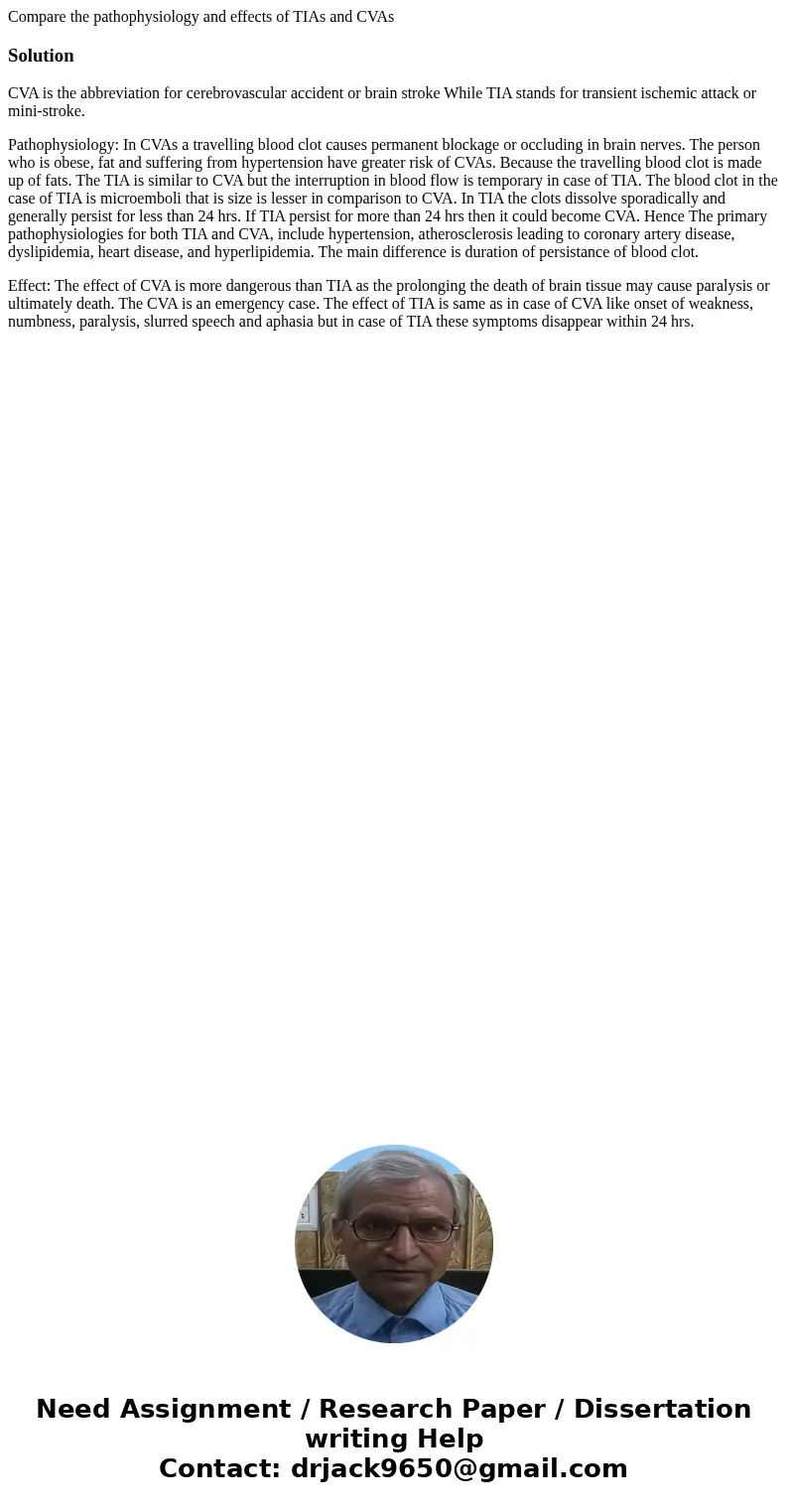Compare the pathophysiology and effects of TIAs and CVAsSolu
Compare the pathophysiology and effects of TIAs and CVAs
Solution
CVA is the abbreviation for cerebrovascular accident or brain stroke While TIA stands for transient ischemic attack or mini-stroke.
Pathophysiology: In CVAs a travelling blood clot causes permanent blockage or occluding in brain nerves. The person who is obese, fat and suffering from hypertension have greater risk of CVAs. Because the travelling blood clot is made up of fats. The TIA is similar to CVA but the interruption in blood flow is temporary in case of TIA. The blood clot in the case of TIA is microemboli that is size is lesser in comparison to CVA. In TIA the clots dissolve sporadically and generally persist for less than 24 hrs. If TIA persist for more than 24 hrs then it could become CVA. Hence The primary pathophysiologies for both TIA and CVA, include hypertension, atherosclerosis leading to coronary artery disease, dyslipidemia, heart disease, and hyperlipidemia. The main difference is duration of persistance of blood clot.
Effect: The effect of CVA is more dangerous than TIA as the prolonging the death of brain tissue may cause paralysis or ultimately death. The CVA is an emergency case. The effect of TIA is same as in case of CVA like onset of weakness, numbness, paralysis, slurred speech and aphasia but in case of TIA these symptoms disappear within 24 hrs.

 Homework Sourse
Homework Sourse